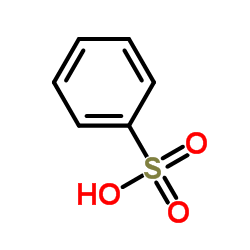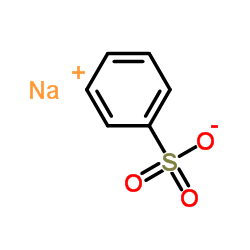Molecular template approach for evolution of conducting polymer nanostructures: tracing the role of morphology on conductivity and solid state ordering.
M Jinish Antony, M Jayakannan
文献索引:J. Phys. Chem. B 114(3) , 1314-24, (2010)
全文:HTML全文
摘要
Here, we report a unique molecular template approach, for the first time, to study the evolution of the different types of nanomaterial morphologies such as nanofiber, nanorod, nanosphere, and nanotube in a single system without changing their chemical composition or polymerization route. A renewable resource surfactant was self-organized with aniline (95%) and pyrrole (5%) in water to produce white emulsion consisting of long-range cylindrical micellar aggregates. The dilution of the emulsion with water resulted in the transformation of cylindrical to vesicular aggregates without any phase separation. The size and shape of the cylindrical and vesicular template aggregates were confirmed by dynamic light scattering and electron microscopic analysis. The chemical oxidation of the cylindrical templates produced nanofibers and nanorods, whereas hollow spheres and nanotubes were produced by vesicular templates. The nanofibers were found as long as 4-5 microm length with 200 nm widths, whereas the nanorods were shorter in length (0.5-0.7 microm) with 80-120 nm diameter. The hollow spheres were obtained in 1 mum diameter with wall thickness of approximately 80 nm. The length of the nanotubes was found to vary from 1.2 to 1.8 microm. The average wall thickness and inner pore diameter of the nanotubes were found as approximately 30 nm and approximately 60 nm, respectively. The size and shape of the template aggregates match very well with that of the synthesized nanomaterials and provide direct evidence for the template-assisted evolution of the nanostructure morphology. NMR, FT-IR and UV-visible spectroscopies were utilized to confirm the structure and electronic properties of the nanomaterials. Wide angle X-ray diffraction and transmission electron microscopy-electron diffraction analysis revealed that the nanotubes possessed three-dimensional lamellar-type solid states ordering with high percent crystallinity up to 60%. Variable temperature four-probe conductivity measurements of all samples showed typical I-V plots. The conductivity of the nanofibers was found one order higher than that of nanorod, hollow sphere, and nanotubes at all temperatures. The present investigation enabled us to establish the role of various types of nanomorphologies on properties of nanomaterials such as conductivity and solid state ordering without change in their chemical composition.
相关化合物
| 结构式 | 名称/CAS号 | 分子式 | 全部文献 |
|---|---|---|---|
 |
苯磺酸
CAS:98-11-3 |
C6H6O3S | |
 |
苯磺酸钠
CAS:515-42-4 |
C6H5NaO3S |
|
Role of Counterions in Controlling the Properties of Ultraso...
2015-06-17 [ACS Appl. Mater. Interfaces 7 , 12972-80, (2015)] |
|
Nanocarriers for photodynamic therapy-rational formulation d...
2015-08-01 [Int. J. Pharm. 491 , 250-60, (2015)] |
|
Kinetic and computational evidence for an intermediate in th...
2012-10-28 [Org. Biomol. Chem. 10(40) , 8095-101, (2012)] |
|
CE-ESI-MS analysis of singly charged inorganic and organic a...
2009-11-01 [Electrophoresis 30(22) , 3918-25, (2009)] |
|
Improved oral absorption of cilostazol via sulfonate salt fo...
2015-01-01 [Drug Des. Devel. Ther. 9 , 3961-8, (2015)] |